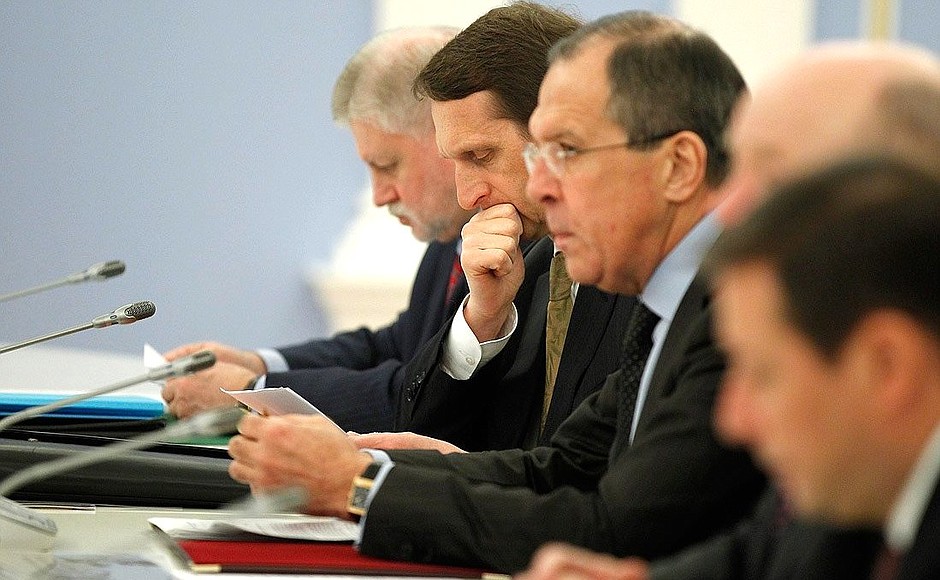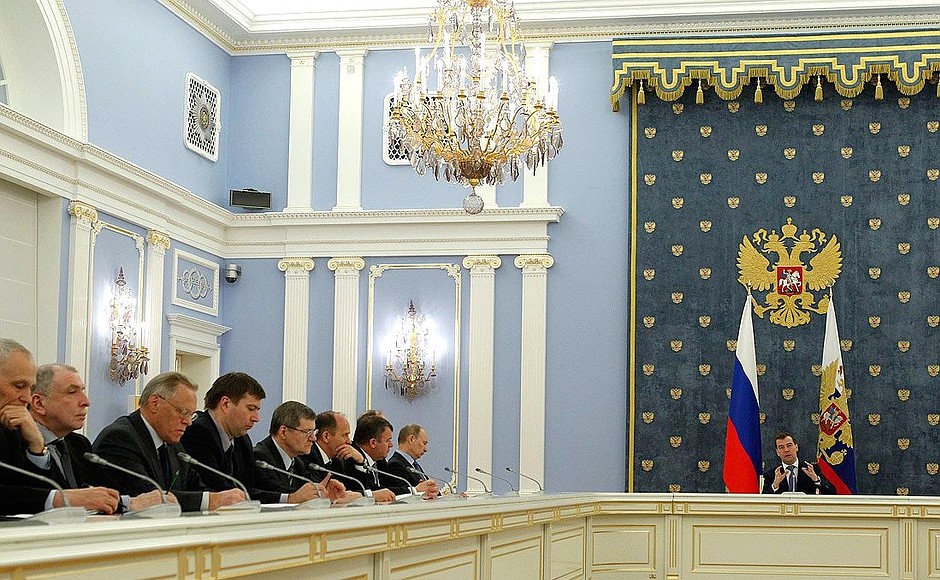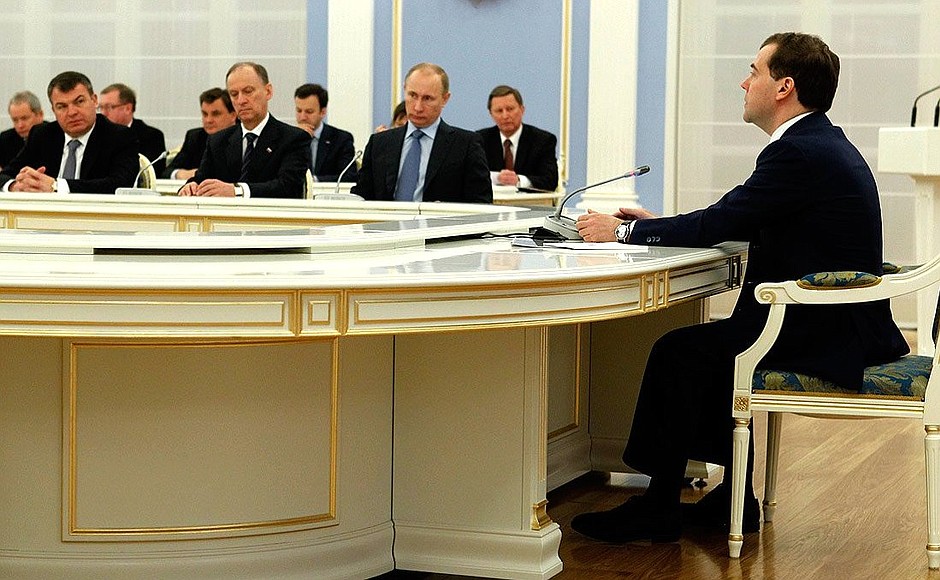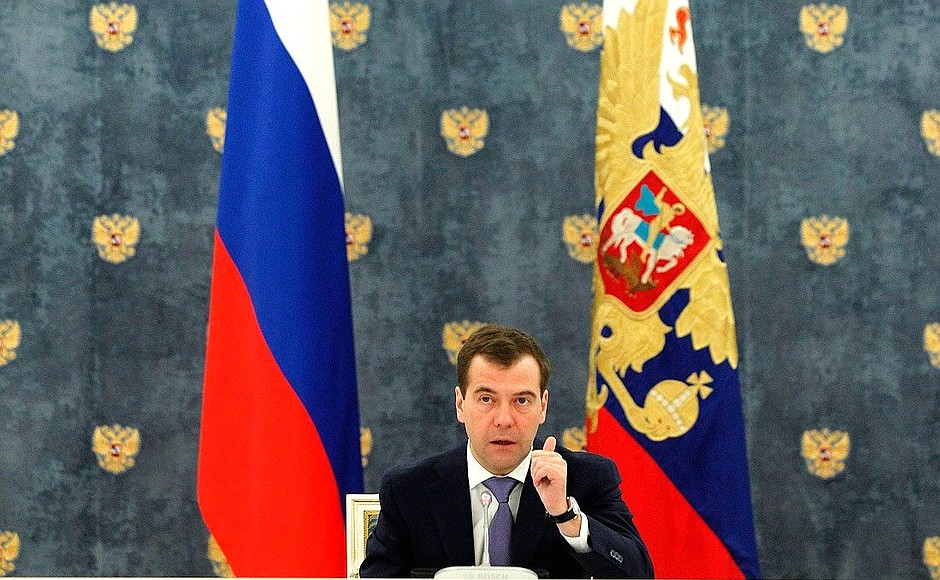* * *
President of Russia Dmitry Medvedev: Colleagues,
We are here today to discuss our country’s long-term policy for aviation sector development through to 2020. This covers a wide range of tasks and activities that all have a direct impact on the industry’s future in Russia. It is also one of our economic modernisation priorities what’s more, one of the areas that will be crucial for setting our economy on an innovative development track. Finally, the situation in this sector is crucial too for the country and its people’s security, and, simply put, has a huge impact on their quality of life.
Demand for air transport services has risen steadily over recent years. Passenger traffic increased by an average 10 percent a year over 2000–2010. This is a big increase. As for freight traffic, it doubled over the same period. The experts say this trend is likely to continue over the coming years.
When the international financial crisis hit we took a series of state support measures in the aircraft manufacturing sector, and this helped our companies to continue their projects as planned. These projects include development of a number of new aircraft, including the Sukhoi Superjet-100 passenger plane, and getting it certified to international standards. Deliveries of the An-148 aircraft have begun, as have deliveries of new generation fighter planes and helicopters such as the Su-30, Su-35, and Mi-28M. Work continues on promising military aircraft and on the MS-21 medium-haul plane.
These provide us with some good results over the recent period, but there are still a number of problems that must be resolved. It is enough to say that only 7 civil aircraft were made in 2010. This is a very sorry figure. The number of civil airfields has decreased by almost 40 percent compared to 2000. The problem is not even so much the drop in number, for the most important thing of all is quality, and the biggest problem is that the infrastructure at many airports still in operation today falls below the standards required for organising flights. We will have to upgrade these facilities, despite the big costs involved.
In order to change this situation, the federal budget will invest more than 5 trillion rubles [around $176 billion] in developing the sector over the period to 2020. This is ten times more than the amount put into the sector over the last decade. The bulk of the financing will go through the state arms procurement programme and six federal targeted programmes. We are talking about big amounts of money here, and every ruble must be spent with maximum result.
How exactly will this money be spent?
The first task is to modernise civil aviation airports and upgrade the unified air traffic management system. We will put more than 470 billion rubles of federal budget money into this work in the mid-term. This year, facilities will be upgraded and new facilities built at 38 airports, including airports in Moscow, Sochi, Vladikavkaz, Kazan, and on the Kuril Islands. Budget money totalling more than 26 billion rubles has already been allocated for this work. More than 60 more ground-based aviation sector facilities will be modernised over the period to 2015.
The second task is to upgrade the civil aviation fleet. Passenger planes flying the main routes have an average age of 17 years, and regional planes are even older, up to 30 years. These are very old aircraft.
This requires a balance between the interests of the companies making and buying aircraft, which is not easy to do. We need to make it advantageous for our airlines to buy Russian-made planes, but not just any planes. Russian aircraft manufacturers need to be able to truly compete against foreign firms when it comes to the quality/price ratio. Russian-made planes must be just as good as foreign planes in terms of engine noise, fuel consumption, and flight range, not to mention the ‘smart’ side of things – the electronic systems used. Unfortunately, even the new planes our factories manufacture still have a few problems here, as I had a chance to see recently for myself. And so they should all be working hard now, rather than asking for money.
”Our country's policy for aviation sector development covers a wide range of tasks that all have a direct impact on the industry’s future in Russia. It is one of our economic modernisation priorities.“
We need to improve the quality of the aircraft we produce, develop the most promising and advanced models and put them into series production. To do this, we need above all to modernise the aircraft manufacturing sector and encourage innovative development through new designs and closer cooperation with not just the sector’s traditional partners but new partners too. We have world-renowned design schools with a recognised reputation, and we have a wealth of production experience. But we need to use it all more effectively, put it in the context of today’s life. Obviously, development work all needs to be digital these days, but not all of our design bureaus are ready for this. This is a big separate issue that needs to be addressed. State support for the sector is possible, but only at certain stages, and everyone needs to understand this. Beyond this stage, companies themselves need to change, and change too, of course, the range of planes they produce.
The third key task is to build up our military aviation capability. The military airport network does not meet the deployment demands of our aviation groups. At the recent Defence Ministry board meeting I gave the instruction to establish several big aviation bases that take into account deployment needs and will be based at the main strategic points.
We need to continue upgrading our military aviation, including with drones, which will improve the existing aviation groups’ combat capabilities.
The fourth task is to improve air traffic services’ quality and accessibility. We have discussed this issue a lot already. There are still problems in this area, problems that continue to come up regularly, unfortunately. It is especially important to address the situation in places where building airports is simply essential today.
We also need to decide what to do with a number of airports in the Far North and similar regions. The transport network needs to be optimised here too. The goal is obvious: to build big transport hubs so that people do not need to fly from Krasnoyarsk to Novosibirsk via Moscow, as they do at the moment. Almost all of the air traffic flying regional routes goes via Moscow. This is not a recent development, but is the consequence of the aviation fleet’s and infrastructure’s general degradation that began in the 1990s and continued through the subsequent years, unfortunately.
We need to do something about this. We need to set up state-owned air transport companies based at airports that have social importance, but where air transport services are not sufficiently profitable and are unlikely to become so in the coming years, especially taking our country’s vast size into account. We cannot lose sight of this fact. Air transport is not the luxury here that it is in some European countries, where it is much quicker to drive than to fly. For us it is a vital necessity.
Of course, we will have to keep subsidising the airlines flying passenger routes to the Far East. This programme has had some good results and it would be wrong to abandon it any time soon.
In conclusion, I want to say once more just how important it is for Russia to develop its aviation sector. This is a key condition for making our economy more competitive. I want to hear your proposals today on the priorities and stages for the work ahead.
<…>



